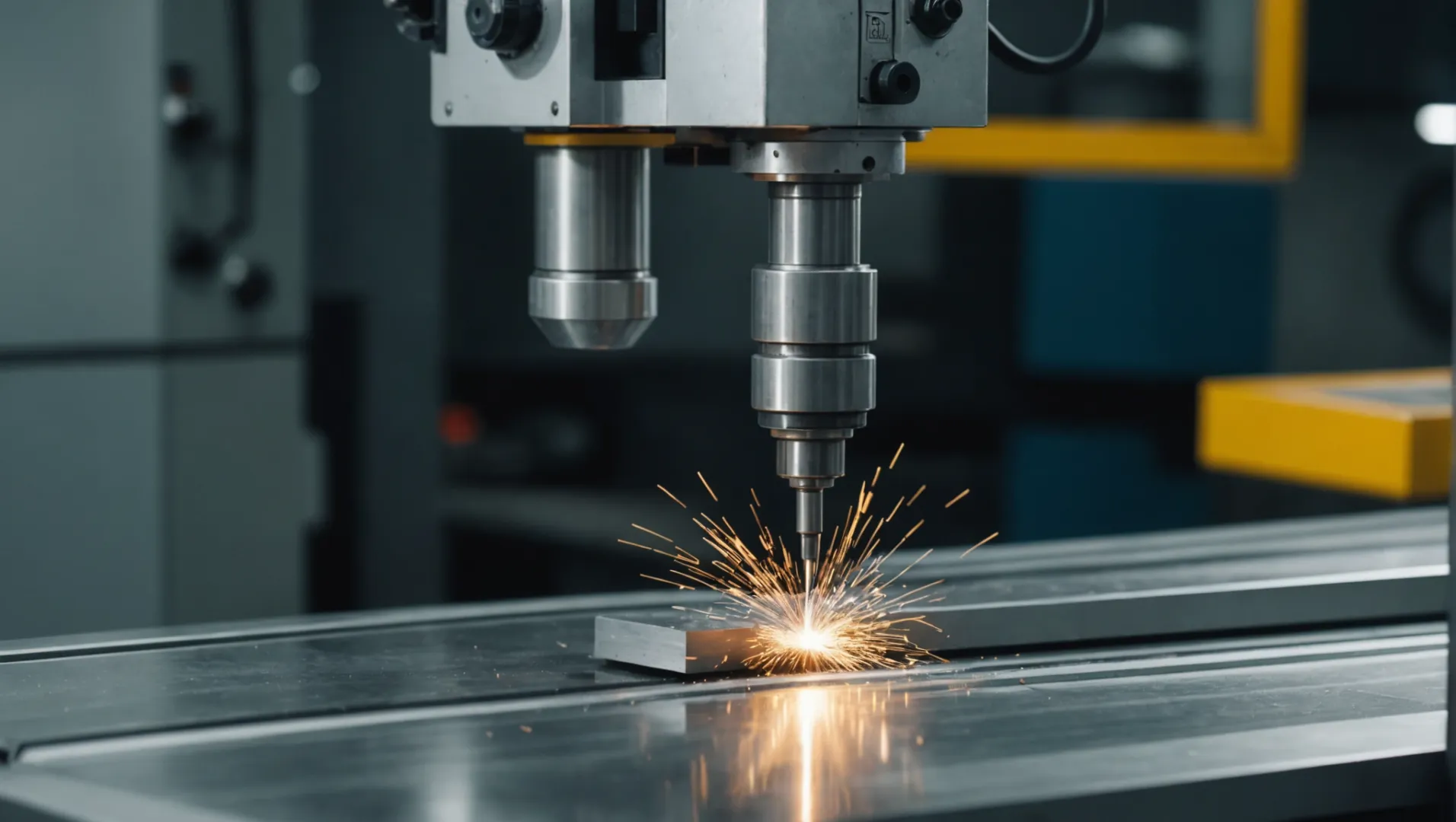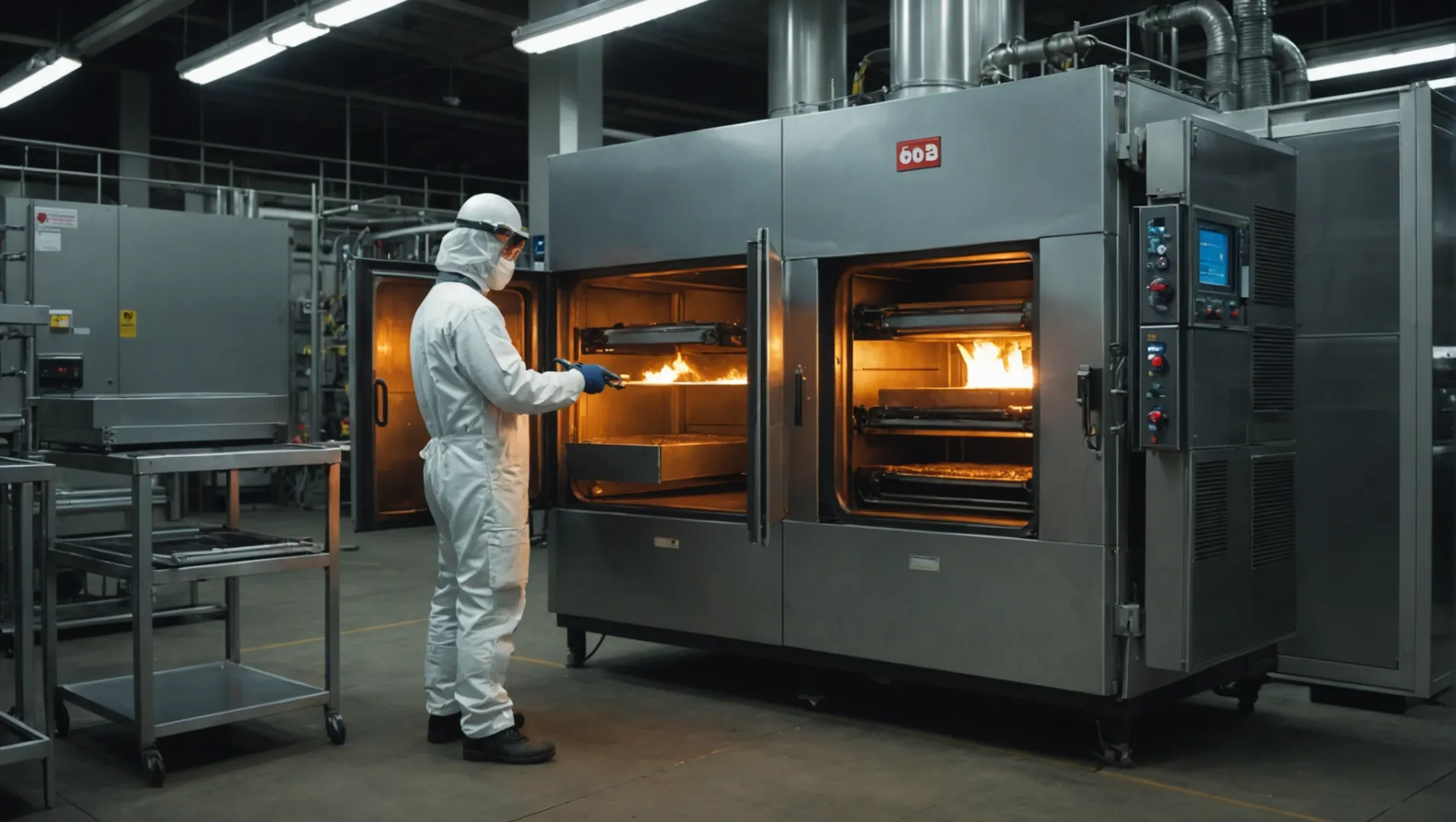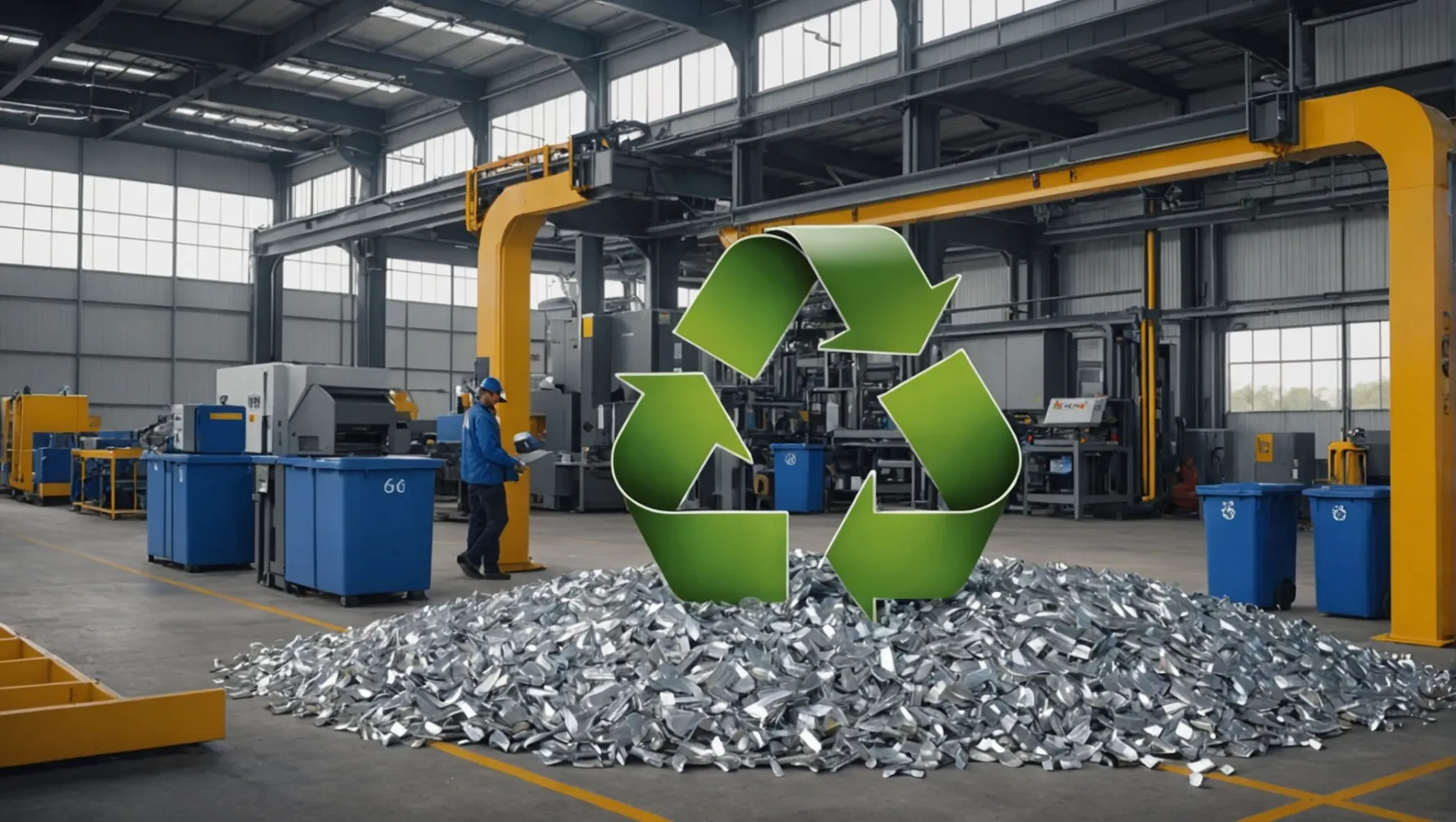Why is 6061 Aluminum Alloy the Preferred Material for CNC Precision Parts?
When it comes to CNC precision machining, the material you choose can make all the difference. For me, 6061 aluminum alloy has become the gold standard—here’s why.
6061 aluminum alloy is preferred for CNC precision parts due to its excellent machinability, high strength, and corrosion resistance. Its properties allow for efficient machining, resulting in durable, lightweight components ideal for high-performance applications.
But there’s more to 6061 aluminum than just these initial benefits. Join me as we dive deeper into its properties and discover why it’s the material of choice across so many industries.
6061 aluminum is ideal for CNC due to high machinability.True
6061 aluminum's excellent machinability makes it perfect for CNC precision parts.
How Does 6061 Aluminum Compare to Other Alloys for CNC Machining?
When it comes to CNC machining, choosing the right alloy can make all the difference in efficiency and quality. How does 6061 aluminum fare compared to other alloys?
6061 aluminum alloy is favored in CNC machining due to its superior machinability, strength, and corrosion resistance, outperforming many other alloys. Its balance of properties makes it versatile for various industries.

Machinability Comparison
6061 aluminum stands out for its excellent machinability, making it a popular choice among machinists. Its low cutting heat and good friction performance mean it can be cut efficiently without excessive tool wear or thermal distortion. Compared to other alloys like 7075, which has higher hardness and strength but is more challenging to machine, 6061 is preferred for projects requiring complex geometries.
- 6061 Aluminum: Known for high machinability, ideal for intricate parts.
- 7075 Aluminum: Stronger but harder to machine; suited for high-stress applications.
Mechanical Properties
When comparing mechanical properties, 6061 offers a compelling balance of strength and ductility. It can be heat-treated to increase its strength (notably in the T6 condition), making it competitive with stronger but less ductile alloys. For instance, 2024 aluminum is stronger but lacks the corrosion resistance and machinability of 6061.
| Alloy | Yield Strength (MPa) | Machinability | Corrosion Resistance |
|---|---|---|---|
| 6061 | 276-310 | Excellent | High |
| 7075 | 435-505 | Moderate | Moderate |
| 2024 | 345-414 | Moderate | Low |
Corrosion Resistance
A key advantage of 6061 over other aluminum alloys is its superior corrosion resistance. This makes it suitable for marine and outdoor applications where exposure to moisture is a concern. Unlike 2024, which corrodes easily without protective coating, 6061 forms a protective oxide layer naturally.
Applications in Industry
6061’s properties make it highly versatile across industries. In aerospace, it is used for frames and components due to its lightweight yet strong nature. The automotive industry benefits from its combination of strength and weight reduction, crucial for fuel efficiency.
- Aerospace: Lightweight structural components.
- Automotive: Body panels and chassis components.
- Electronics: Heat sinks due to good thermal conductivity.
Versatility in Heat Treatment
Heat treatment enhances 6061’s performance, particularly in demanding CNC applications. The T6 temper provides a significant boost in strength while maintaining machinability. This makes it a top choice when other alloys might require additional processing steps to achieve similar properties.
The versatility of heat-treated1 states allows manufacturers to tailor the material’s properties to specific needs, a flexibility not always available with other aluminum alloys.
6061 aluminum is harder to machine than 7075.False
6061 is easier to machine due to lower hardness compared to 7075.
6061 aluminum offers better corrosion resistance than 2024.True
6061 naturally forms a protective oxide layer, unlike 2024.
What Industries Benefit Most from Using 6061 Aluminum in CNC Applications?
Discover how industries leverage 6061 aluminum’s properties in CNC applications for optimal results.
Industries such as aerospace, automotive, electronics, and marine benefit significantly from using 6061 aluminum in CNC applications due to its lightweight, corrosion resistance, and strength.

Aerospace Industry
The aerospace sector requires materials that are both lightweight and strong to improve fuel efficiency and payload capacity. 6061 aluminum2 is commonly used in aircraft components like fuselage frames, wing spars, and other structural elements due to its superior strength-to-weight ratio and excellent machinability. Its natural corrosion resistance also ensures longevity in high-altitude conditions where moisture and pressure variations can be problematic.
Automotive Industry
In automotive manufacturing, the drive for fuel efficiency and performance has led to increased use of lightweight materials. 6061 aluminum3 is ideal for producing components such as engine blocks, suspension parts, and chassis elements. It helps reduce vehicle weight without compromising strength, enhancing both acceleration and fuel efficiency. Additionally, its ability to undergo heat treatment allows for components that can withstand high mechanical stress.
Electronics Industry
Heat management is critical in electronics to ensure optimal performance and lifespan of devices. 6061 aluminum4 is frequently employed in electronic housings and heat sinks due to its excellent thermal conductivity and corrosion resistance. It effectively dissipates heat generated by electronic components, thus improving device reliability.
Marine and Shipbuilding Industries
Marine applications demand materials that can withstand harsh, corrosive environments. 6061 aluminum5 offers exceptional corrosion resistance due to its oxide layer, making it suitable for shipbuilding and offshore structures. Components like hulls, masts, and superstructures benefit from its lightweight nature, enhancing speed and maneuverability while resisting saltwater corrosion.
Industrial Equipment and Machinery
Industrial machinery often requires durable components capable of withstanding heavy use and stress. 6061 aluminum6 is used in robotics, precision mechanical parts, and engineering equipment due to its strength, ease of machining, and ability to be shaped into complex geometries. Its versatility allows for creating intricate designs while maintaining structural integrity.
6061 aluminum is commonly used in aerospace fuselage frames.True
6061 aluminum's strength-to-weight ratio makes it ideal for aircraft frames.
6061 aluminum is unsuitable for marine applications due to corrosion.False
Its natural oxide layer provides excellent corrosion resistance in marine settings.
How Does Heat Treatment Enhance the Performance of 6061 Aluminum Parts?
Unlock the potential of 6061 aluminum by mastering the art of heat treatment.
Heat treatment transforms 6061 aluminum parts by enhancing their strength, hardness, and durability. Through processes like solution heat treatment and aging, the material achieves optimal mechanical properties suited for high-performance applications. This makes 6061 aluminum ideal for industries demanding lightweight yet robust components.

The Science Behind Heat Treatment
Heat treatment is a controlled process used to alter the physical (and sometimes chemical) properties of a material, including 6061 aluminum. It involves heating and cooling the metal to achieve desired characteristics such as increased strength or hardness. In the case of 6061 aluminum, heat treatment primarily enhances its mechanical properties, making it suitable for demanding environments.
Key Heat Treatment Processes for 6061 Aluminum
Solution Heat Treatment
This process involves heating the aluminum to a high temperature to dissolve alloying elements into a solid solution. For 6061, this typically means heating the material to around 530°C (986°F). Once the elements are dissolved, rapid cooling (usually by quenching in water) locks these elements in place.
- Outcome: Enhanced strength and improved resistance to stress and deformation.
- Applications: Ideal for parts requiring high durability, such as aircraft components7.
Aging (Precipitation Hardening)
After solution heat treatment, 6061 aluminum is aged at a lower temperature (around 160°C – 190°C or 320°F – 374°F) to allow the alloying elements to precipitate out of the solution. This step increases hardness and tensile strength significantly.
- Outcome: Achieves optimal mechanical properties without compromising on weight.
- Applications: Suitable for automotive applications8 that require a balance between strength and weight.
Comparing Heat Treatment States: T6 vs. T4
| State | Process | Strength | Applications |
|---|---|---|---|
| T6 | Solution heat treated and artificially aged | High | Structural components, robotics |
| T4 | Solution heat treated and naturally aged | Moderate | Parts not under high stress |
- T6 State: The T6 state offers maximum strength and is used extensively in aerospace and structural applications.
- T4 State: Offers good machinability with moderate strength, suitable for components not subjected to high loads.
Advantages of Heat Treatment in Performance Enhancement
- Increased Load-Bearing Capacity: Parts can handle greater mechanical stress.
- Improved Wear Resistance: Higher hardness reduces wear in frictional applications.
- Enhanced Durability: Makes parts more resistant to environmental degradation.
By understanding and applying these heat treatment techniques, manufacturers can produce 6061 aluminum parts that not only meet but exceed industry standards. This is why heat treatment is crucial9 in industries ranging from aerospace to electronics.
Solution heat treatment increases 6061 aluminum's strength.True
Solution heat treatment dissolves alloying elements, enhancing strength.
Aging process reduces the hardness of 6061 aluminum.False
Aging increases hardness by allowing elements to precipitate out.
What Are the Environmental Advantages of Using 6061 Aluminum Alloy?
6061 aluminum alloy is not only favored for its machining properties but also for its environmental benefits, making it a sustainable choice in manufacturing.
6061 aluminum alloy offers environmental advantages such as recyclability, energy efficiency in production, and reduced material waste. Its lightweight nature reduces transportation emissions, making it an eco-friendly material choice.

Recyclability and Sustainability
One of the most significant environmental advantages of 6061 aluminum alloy is its high recyclability. Aluminum is a metal that can be recycled repeatedly without degradation of its properties. This recycling process requires only about 5% of the energy used to produce primary aluminum from bauxite ore. Thus, using recycled 6061 aluminum10 significantly reduces energy consumption and greenhouse gas emissions.
Moreover, the recycling of aluminum helps conserve natural resources by reducing the need for mining bauxite, the primary source of aluminum. This lessens the impact on ecosystems and reduces soil erosion and water pollution associated with mining activities.
Energy Efficiency in Production
The production process for 6061 aluminum alloy is designed to be energy-efficient. Advances in smelting technology have reduced the carbon footprint of producing this alloy. Additionally, since 6061 is lightweight yet strong, less material is required to achieve the same structural performance compared to heavier metals. This material efficiency translates to lower energy use in production, contributing to a more sustainable manufacturing process.
Reduced Material Waste
6061 aluminum alloy’s excellent machinability results in less material waste during the CNC machining process. This is because it allows for precise cutting and shaping with minimal excess material needing to be removed. As a result, the amount of scrap generated is reduced, leading to more efficient use of resources.
Moreover, any scrap generated during machining can be collected and recycled, further enhancing the eco-friendly nature of using this alloy in manufacturing applications.
Lightweight and Fuel Efficiency
The lightweight characteristic of 6061 aluminum alloy is particularly advantageous for reducing transportation emissions. For industries such as automotive and aerospace, using lighter materials like 6061 aluminum helps improve fuel efficiency and reduces carbon dioxide emissions from vehicles. The reduction in weight without compromising strength leads to lower fuel consumption and a smaller environmental footprint.
Conclusion
Incorporating 6061 aluminum alloy into manufacturing processes not only benefits the efficiency and quality of production but also aligns with sustainable practices. By choosing this material, industries can reduce their environmental impact through improved recyclability, lower energy consumption, reduced waste, and enhanced fuel efficiency in end products.
6061 aluminum alloy is 100% recyclable.True
6061 aluminum can be recycled repeatedly without losing properties.
6061 aluminum production uses more energy than steel.False
6061 aluminum production is energy-efficient, using less energy than steel.
Conclusion
Incorporating 6061 aluminum alloy into manufacturing processes not only benefits the efficiency and quality of production but also aligns with sustainable practices.
-
Discover how heat treatment enhances 6061’s strength for demanding applications.: Heat treating 6061 aluminum makes the part physically stronger and helps keep its shape after forming. This alloy can also withstand … ↩
-
Explore the benefits of 6061 aluminum in aircraft manufacturing.: It is known for its excellent strength-to-weight ratio, making it a popular choice for aircraft, spacecraft, and other vehicles where weight is … ↩
-
Learn how 6061 aluminum enhances automotive performance.: The 6061 aluminum alloy has a steel-like texture, but it’s easy to work with and can be polished to achieve different colors. ↩
-
Understand why 6061 aluminum is ideal for electronics.: The 6061 aluminum alloy has a steel-like texture, but it’s easy to work with and can be polished to achieve different colors. ↩
-
Discover 6061 aluminum’s role in marine applications.: As a highly adaptable aluminum alloy for marine grade applications, 6061 possesses superb mechanical properties, including excellent corrosion resistance. ↩
-
Find out how 6061 aluminum benefits industrial equipment.: Cox Manufacturing manufactures 6061 Aluminum machined parts for a variety of applications, especially best suited for jobs that need welding. ↩
-
Learn how heat treatment strengthens aircraft parts effectively.: Our in-house, NADCAP-approved heat treating services handle the annealing required for many aerospace parts. This means that components can be immediately taken … ↩
-
Explore why 6061 aluminum is favored in automotive design.: Aluminum 6061, including 6061 aluminum plate is commonly used in automobile manufacturing operations where fixtures are needed for production lines. ↩
-
Discover why heat treatment is vital in manufacturing processes.: 1. Increase in strength and toughness · 2. Heat treatment can make steel softer · 3. Increased flexibility, reduced brittleness · 4. Increased wear … ↩
-
Learn how recycling aluminum reduces energy use and environmental impact.: The environmental benefits of using recycled aluminum are extensive—including reducing energy use, mining pollution, shipping pollution and … ↩




